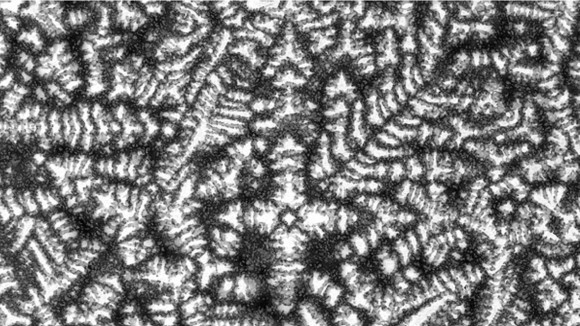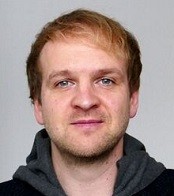 Ben Breitung received his PhD from the Karlsruhe Institute of Technology (KIT) in 2013, followed by a postdoc position in the Battery and Electrochemistry Laboratory at KIT/BASF in 2014. Since 2017, he was a group leader at the Institute of Nanotechnology at KIT. His research focuses on high-entropy materials and printed electronics. He is now leader of the ‘Nanomaterials for Electronic and Energy Applications’ group, which focuses on high-entropy and functional materials for electronic and energy applications in printed devices.
Ben Breitung received his PhD from the Karlsruhe Institute of Technology (KIT) in 2013, followed by a postdoc position in the Battery and Electrochemistry Laboratory at KIT/BASF in 2014. Since 2017, he was a group leader at the Institute of Nanotechnology at KIT. His research focuses on high-entropy materials and printed electronics. He is now leader of the ‘Nanomaterials for Electronic and Energy Applications’ group, which focuses on high-entropy and functional materials for electronic and energy applications in printed devices.
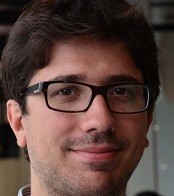 Francesco Maresca is a tenure-track Assistant Professor at the University of Groningen. He received his PhD in Mechanical Engineering from the Eindhoven University of Technology in 2015, and then worked as a postdoctoral fellow in the Mechanical Engineering institute at EPFL from 2015 to 2019. His research aims to provide a multi-scale understanding of plasticity, phase transitions and failure in metals, in order to develop predictive theories for guiding materials design. His current research is on high entropy alloys, hydrogen embrittlement, advanced high strength steels and shape memory alloys. He received the 2016 ‘Young Academics Steel Award’ from the Steel Institute VDEh, Germany, and was selected for the ‘Emerging Leaders 2021’ focus issue of Modelling and Simulation in Materials Science and Engineering.
Francesco Maresca is a tenure-track Assistant Professor at the University of Groningen. He received his PhD in Mechanical Engineering from the Eindhoven University of Technology in 2015, and then worked as a postdoctoral fellow in the Mechanical Engineering institute at EPFL from 2015 to 2019. His research aims to provide a multi-scale understanding of plasticity, phase transitions and failure in metals, in order to develop predictive theories for guiding materials design. His current research is on high entropy alloys, hydrogen embrittlement, advanced high strength steels and shape memory alloys. He received the 2016 ‘Young Academics Steel Award’ from the Steel Institute VDEh, Germany, and was selected for the ‘Emerging Leaders 2021’ focus issue of Modelling and Simulation in Materials Science and Engineering.
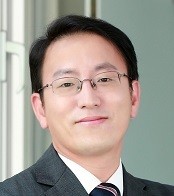 Eun Soo Park is a Professor in the Department of Materials Science and Engineering and a director of the Center for Self-Healing Materials at Seoul National University. He received his PhD in Metallurgical Engineering from Yonsei University, Korea in 2005 and worked as a postdoctoral fellow in the Department of Applied Physics at Harvard University from 2006 to 2008. His research interests are in the tailor-made design and synthesis of advanced engineering alloys and composites for extreme conditions as well as the physical understanding of phase transformations, microstructure evolution, and deformation mechanisms in metallic materials (including bulk metallic glasses, quasicrystals, high-entropy alloys, and self-healing metals). He received the TMS SMD ‘Young Leaders Professional Development Award’ (US, 2016) and a ‘Prime Minister’s Commendation for Innovative Inventions’ (Korea, 2019).
Eun Soo Park is a Professor in the Department of Materials Science and Engineering and a director of the Center for Self-Healing Materials at Seoul National University. He received his PhD in Metallurgical Engineering from Yonsei University, Korea in 2005 and worked as a postdoctoral fellow in the Department of Applied Physics at Harvard University from 2006 to 2008. His research interests are in the tailor-made design and synthesis of advanced engineering alloys and composites for extreme conditions as well as the physical understanding of phase transformations, microstructure evolution, and deformation mechanisms in metallic materials (including bulk metallic glasses, quasicrystals, high-entropy alloys, and self-healing metals). He received the TMS SMD ‘Young Leaders Professional Development Award’ (US, 2016) and a ‘Prime Minister’s Commendation for Innovative Inventions’ (Korea, 2019).
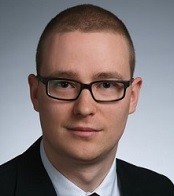 Simon Schweidler is a research scientist at the Institute of Nanotechnology (INT) at Karlsruhe Institute of Technology (KIT). He received his PhD in Physical Chemistry from the Physical Chemistry Institute at the Justus-Liebig-Universität Gießen in 2020. His research focuses on the development, preparation and characterization of new multicomponent materials and high-entropy materials for energy storage (Li-ion batteries) and catalysis. He is currently establishing his own research group at INT focusing on high-throughput synthesis methods, characterization and application of multicomponent and high-entropy materials.
Simon Schweidler is a research scientist at the Institute of Nanotechnology (INT) at Karlsruhe Institute of Technology (KIT). He received his PhD in Physical Chemistry from the Physical Chemistry Institute at the Justus-Liebig-Universität Gießen in 2020. His research focuses on the development, preparation and characterization of new multicomponent materials and high-entropy materials for energy storage (Li-ion batteries) and catalysis. He is currently establishing his own research group at INT focusing on high-throughput synthesis methods, characterization and application of multicomponent and high-entropy materials.

